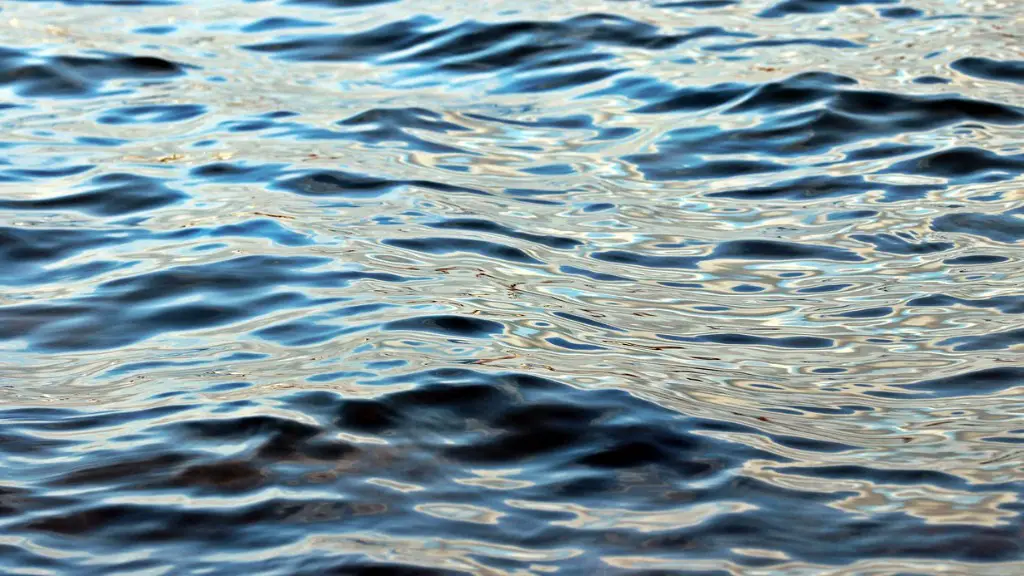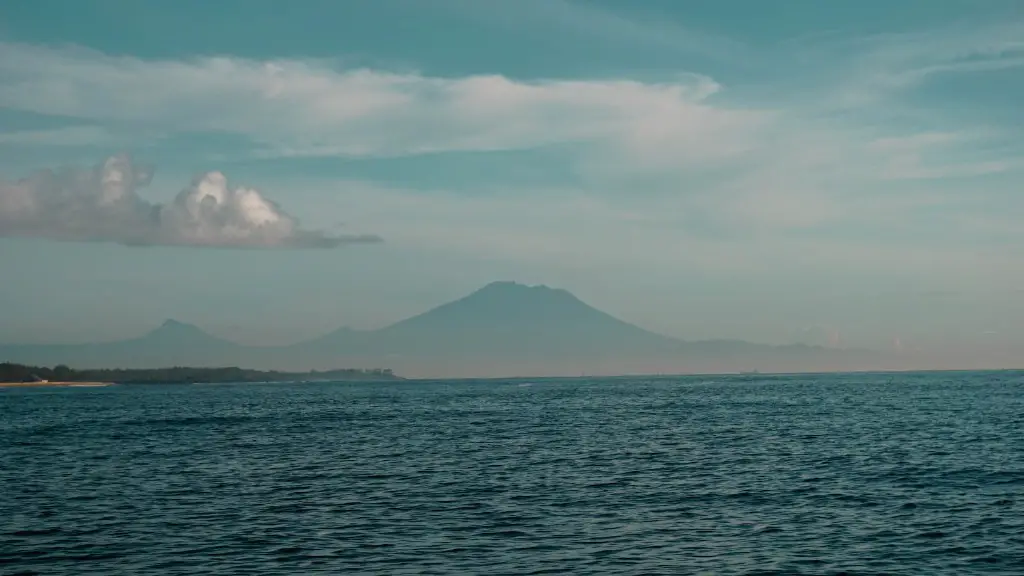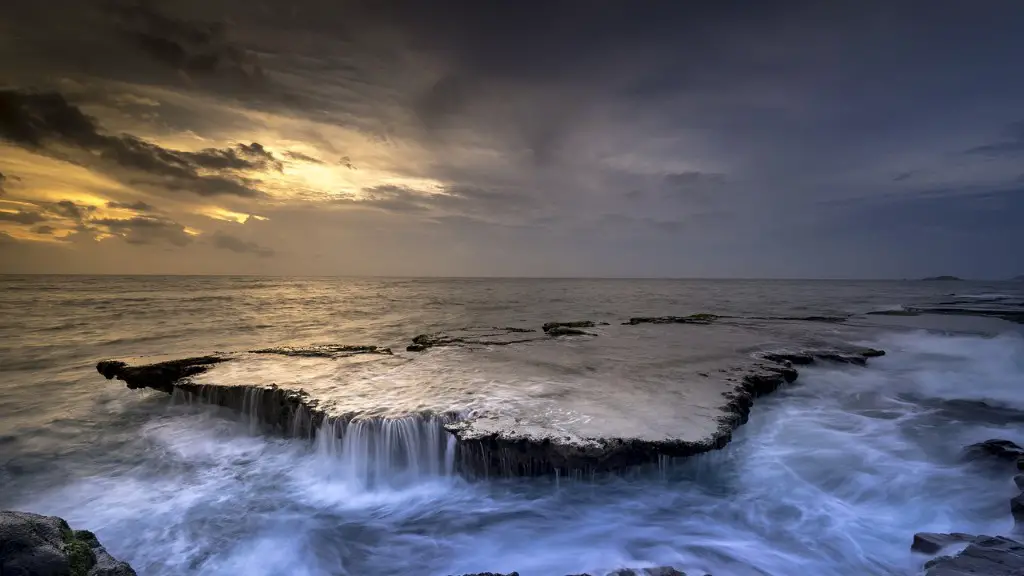Caribbean Sea: Natural Formation
The Caribbean Sea is a body of water between the Gulf of Mexico and the Atlantic Ocean. It is a semi-enclosed sea with the northern coastline being the United States and its borders on the east, south and west being the countries of the Caribbean. It is the most prominent local characteristics of the Caribbean, the other being the Gulf Stream.
The area was formed when the Mid-Atlantic Ridge split in two, creating the Caribbean Sea and the Gulf of Mexico, and when the Caribbean plate moved away from the mid-Atlantic ridge. As a result, the Caribbean Sea was born, extending from the central Atlantic to the eastern tip of Central America.
The water in this body of water is relatively shallow, with an average depth of about 1,600 feet. It is home to many small coral reefs, mangrove swamps, and seagrass meadows. The Caribbean is central to the global balance of energy and water, as its waters act as a natural buffer between the Gulf of Mexico and the Atlantic Ocean.
Fauna and Flora
The Caribbean Sea is home to a unique and diverse biota, including over 3,000 species of fish, over 500 species of invertebrates, and over 500 species of coral and many other forms of marine life. Many of these species are endemic, meaning they are found almost exclusively in the Caribbean Sea.
The Caribbean also has a unique type of rainforest in the subtropics, known as the Caribbean rainforest, home to many species of birds, reptiles and plants, many of which are also endemic.
The islands of the Caribbean are also home to many species of amphibians and reptiles, such as iguanas, geckos and anoles, as well as several species of sea turtles. The Caribbean Sea has also been designated an ecoregion by the World Wildlife Fund for its environmental and biodiversity values, leading to conservation efforts in the region.
Importance To Global Climate
The Caribbean Sea is also an important part of the global climate system. Its waters help to transfer energy and moisture from the Gulf of Mexico to the Atlantic Ocean and vice versa, helping to moderate the global climate.
In the Caribbean, the cyclical El Niño-Southern Oscillation (ENSO) ocean-atmosphere system plays an important role in regulating regional climate patterns. This system helps to bring warm, wetter conditions to the Caribbean in the winter and helps to reduce the risk of droughts and floods.
Economic Impact
The Caribbean Sea is an important source of income for the countries in the region. Many of the islands rely heavily on fisheries, tourism, and international trade as their main sources of income. As the Caribbean is home to some of the most diverse ecosystems on Earth, it is also a major attraction to tourists.
The Caribbean also serves as an important economic corridor as it links the Gulf of Mexico, Central America and the South American continent, making it a strategic corridor for international trade and commerce.
Environmental Challenges
The Caribbean Sea is faced with many environmental challenges. One of the biggest threats to its marine life is the overfishing and overexploitation of its resources. This has caused a severe decline in the number of fish that are able to be caught and has led to the decline of many marine species.
The Caribbean Sea is also vulnerable to climate change, with predictions that it could be hit hard by rising sea levels, changes in temperature and ocean circulation, and the increased intensity of storms and hurricanes. This could result in loss of biodiversity, coral reef destruction, the displacement of people and increased coastal erosion.
Solutions To Challenges
In order to combat the environmental challenges facing the Caribbean Sea, governments in the region need to work together to implement sustainable resource management and conservation measures. This should include improved management of fisheries, protection of marine and coastal habitats, enhancing the resilience of coastal communities, and promoting the protection of coral reefs and other key ecosystems through an ecosystem-based approach.
It is also necessary to invest in renewable energy, reduce carbon emissions and invest in climate resilient infrastructure. This will help to reduce the human impacts on the environment and make it more resilient to the effects of climate change.
Finally, education and public awareness should be promoted in order to spread knowledge on the importance of the Caribbean Sea and the need to conserve and protect its ecosystems.
Environmental Protection
In order to ensure the long-term protection of the Caribbean Sea and its ecosystems, a variety of regional and international initiatives have been launched. The most important of these is the ‘Caribbean Initiative for Fisheries Management’ (CIFM), which aims to promote better management of fisheries resources in the region.
Other initiatives include the ‘Marine Protected Areas of the Caribbean’ (MPAC) and the ‘Sustainable Fisheries in the Caribbean’ (SFC) project. These seek to protect the most ecologically sensitive areas, promote sustainable fishing practices and reduce bycatch.
In addition, the Caribbean nations have also supported the creation of the ‘Caribbean Marine Protected Areas Network’ (CaMPAM) which seeks to coordinate and standardize marine protected area management in the region.
Governance
The Caribbean Sea is governed by a variety of different organizations. The most important of these is the Caribbean Regional Fisheries Mechanism (CRFM) which is responsible for coordinating fisheries management in the region. The CRFM is supported by several regional organizations including the Food and Agriculture Organization (FAO), the Inter-American Tropical Tuna Commission (IATTC) and the International Commission for the Conservation of Atlantic Tunas (ICCAT).
In addition, the Caribbean is home to several regional organizations, such as the Caribbean Community (CARICOM) and the Association of Caribbean States (ACS), that are dedicated to the regional cooperation and development of the region.
Finally, the Caribbean nations have also signed onto the ‘Sustainable Tourism in the Caribbean’ agreement which seeks to promote sustainable tourism in the region.
Treaties And Agreements
The Caribbean Sea is also home to several international agreements and treaties. The most important of these is the Convention for the Protection and Development of the Marine Environment of the Wider Caribbean Region (the Cartagena Convention). This Convention aims to protect the Caribbean Sea from pollution and to promote sustainable development.
The Caribbean also has several regional agreements, such as the Framework Agreement on the Sustainable Development of the Caribbean Sea, which was created in 2007 to promote the sustainable management of the marine environment of the Caribbean Sea. In addition, the Caribbean nations are also party to the ‘Cartagena Protocol on Biosafety’, which aims to protect biological diversity in the Caribbean Sea from the potential risks of genetically modified organism (GMOs).
Conclusion
The Caribbean Sea is a unique and beautiful body of water, home to a variety of life, and an important part of the global climate. It is faced with a number of environmental challenges, such as overfishing, coastal erosion and climate change, that need to be addressed in order to ensure its long-term future. Governments in the region need to work together to implement sustainable resource management and conservation measures, invest in renewable energy, reduce carbon emissions and promote public awareness of the importance of the Caribbean Sea.


